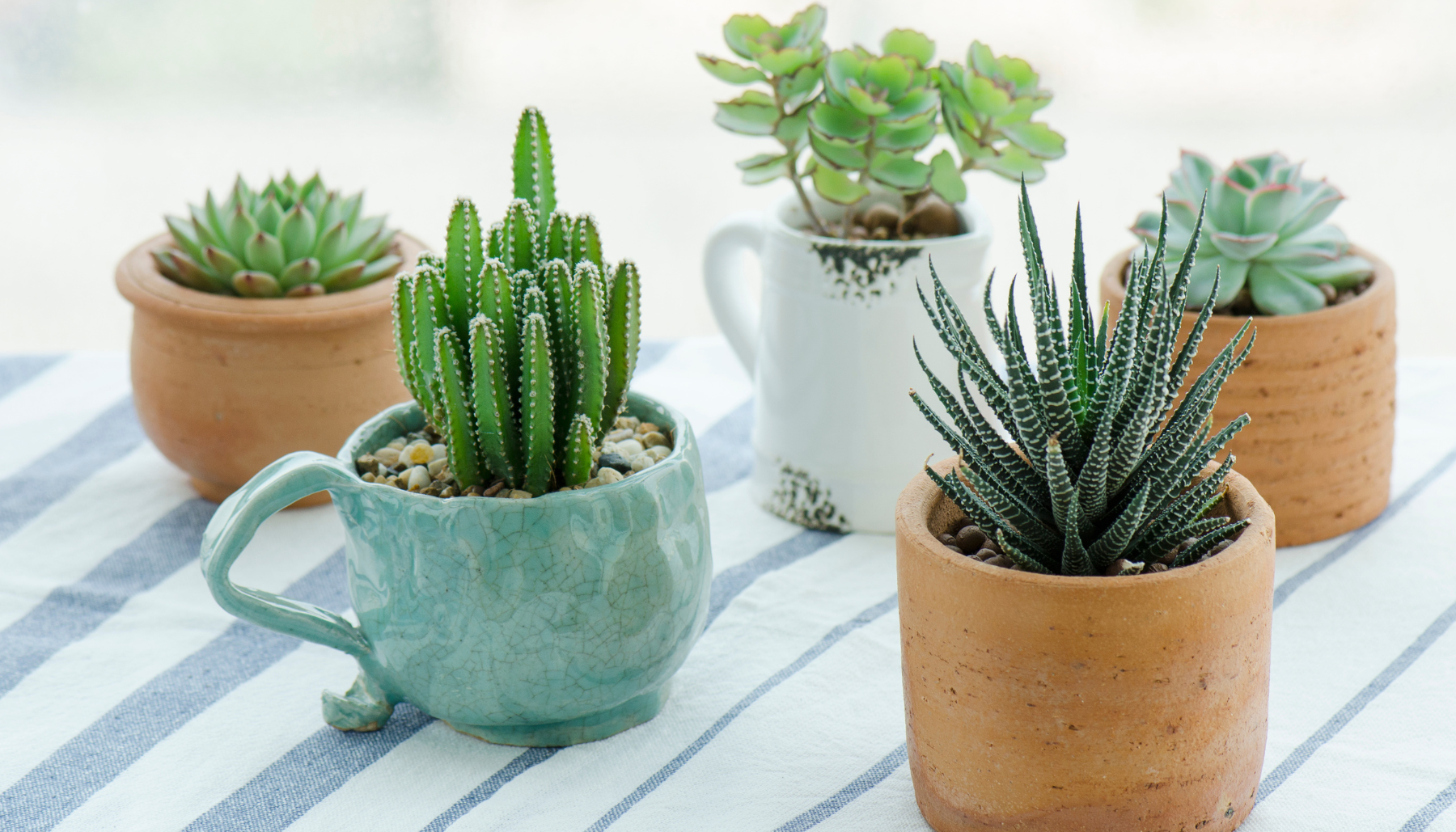I love a succulent (or 12), and honestly, who doesn’t? They’re adorable and inexpensive, which is the perfect combination in my book. And plants do so much for your home! A pop of green (or purple, or red, or blue…) can brighten up any room.
GIF

Plus, succulents are low-maintenance. Most of them only need sunlight and a little bit of water to survive.
Air plants and their pots may be a little bit more expensive than succulents, but these spiky, floaty plant friends are totally worth it. Most of them need even less maintenance than succulents do.
You might already have a house full of air plants and succulents, or maybe you have just a couple and you’re looking for more. I have a tiny aloe vera succulent and a string of pearls, along with one air plant that I tend to forget about. But three isn’t enough for me!
Whether you already have succulents and air plants in your home or you’re ready to take the leap and go succulent shopping, know what you’re getting into first. Here’s what you need to know about taking care of some of the most popular varieties of succulents and air plants.
Jade Plant

There are lots of varieties of jade plants, but the jade plant succulent has shiny leaves and thick stems. This cute plant looks like a miniature tree, and like trees, it only requires minimal care.
Soil: Your jade plant’s soil should drain well, and ideally you should use a succulent-specific soil blend. But if you already have all-purpose soil at home, you can try using it if you add perlite.
Light: Jade plants need lots of indirect sunlight! Make sure you put your plant somewhere where it will receive some sun but not too much.
Water: Time of year matters when it comes to watering your jade plant. During growing season, which is the spring and summer, water your jade plant often so that the soil is moist –but not wet. In the winter, you’ll only need to water once a month.
Check out this guide from The Spruce for more tips on taking care of your jade plant.
Burro’s Tail
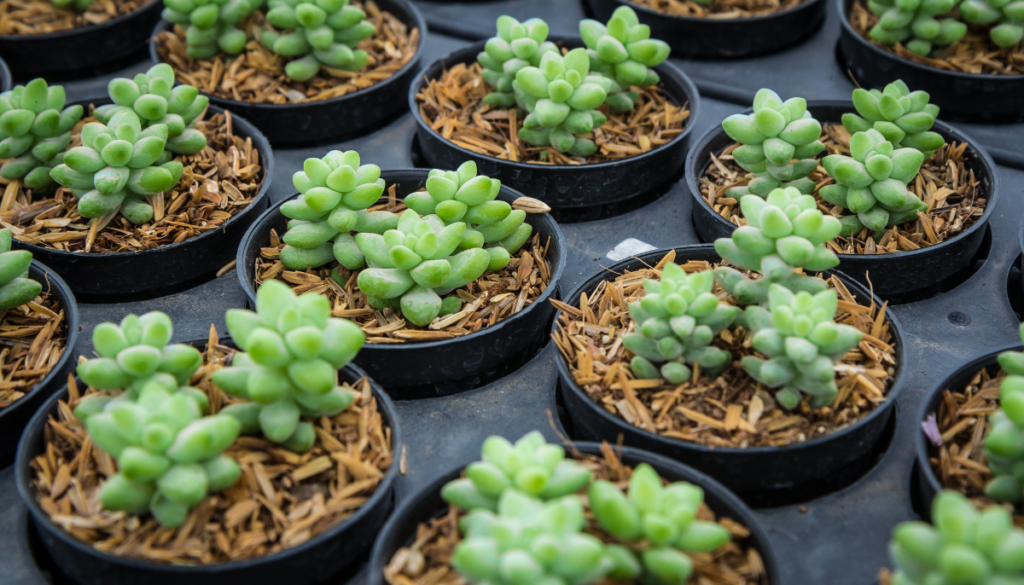
Did you know that all cacti are succulents, but not all succulents are cacti? The burro’s tail (sedum morganianum), named because it looks like a donkey’s tail, is a cactus succulent. And like cacti, it’s prickly in the sense that it doesn’t like to be touched. Avoid handling your burro’s tail as much as possible.
Soil: It likes sandy soil, so you can use either a mixture of half sand and half soil to pot it, or you can purchase a pre-mixed cactus soil.
Light: The burro’s tail needs direct light and you should turn it frequently so that no one side gets too much light.
Water: The burro’s tail does require regular watering, but it only needs water once every two weeks if it is getting enough light.
For more information about taking care of your burro’s tail, check out this guide from Apartment Therapy.
String of Pearls
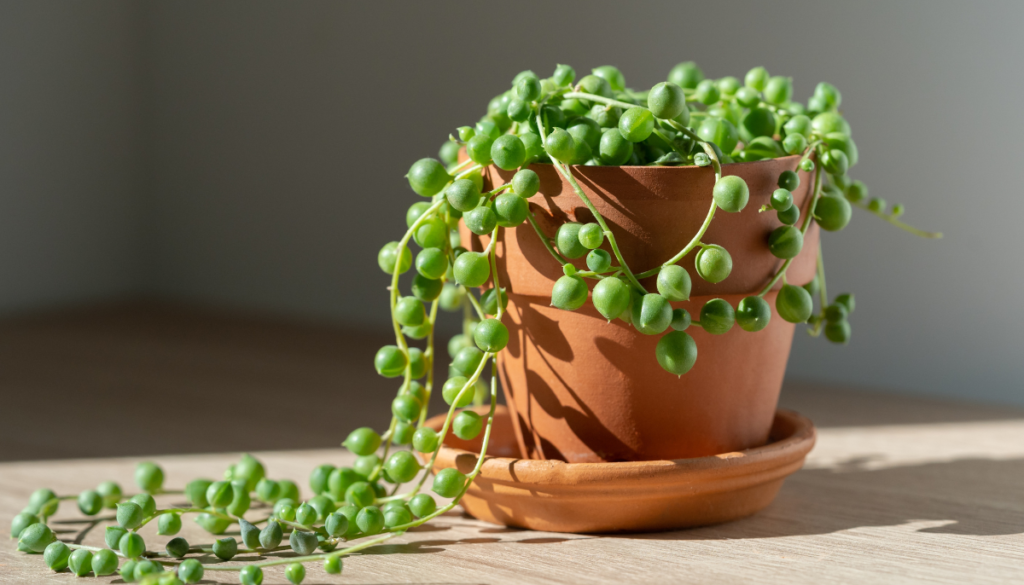
Another adorable and fun succulent, string of pearls is a beautiful addition to any room – as long as you don’t have any pets or kids who will pull it down! In fact, like the burro’s tail, string of pearls don’t like to be touched, so avoid handling them as much as possible.
Soil: A succulent-specific soil will work best to keep your string of pearls happy. It’s best to buy this specific type rather than to use regular houseplant soil. String of pearls plants can be delicate.
Light: It needs plenty of indirect light to survive, ideally about 8 hours every day. Light is key to keep this succulent happy.
Water: You won’t need to water your string of pearls until the soil is dry. Typically, you’ll need to water about once or twice a month.
Looking for more advice on caring for your string of pearls? Take a look at this article from Homes and Gardens.
Read More: Cute Houseplants To Spruce Up Your Space
Pincushion Cactus

Bring vibrant color into your home with a beautiful pincushion cactus. This cactus has lots of thin spines, hence the name pincushion! it flowers in a range of different colors. The bell cactus looks similar, but isn’t the exact same as the pincushion.
Soil: Your pincushion cactus will also benefit from cactus mix soil. Add grit (coarse sand including quartz, crushed sandstone, or crushed granite) to help with drainage.
Light: From fall through spring, your pincushion cactus will do well with bright light. However, once summer rolls around, it should be moved somewhere shady in the afternoon.
Water: Just like the string of pearls, you should only water your pincushion cactus once the soil has completely dried out. In the winter, when it won’t get very much sunlight, you may not need to water at all.
Check out this article from North Carolina State for more tips on caring for your pincushion cactus.
Bunny Ear Cactus
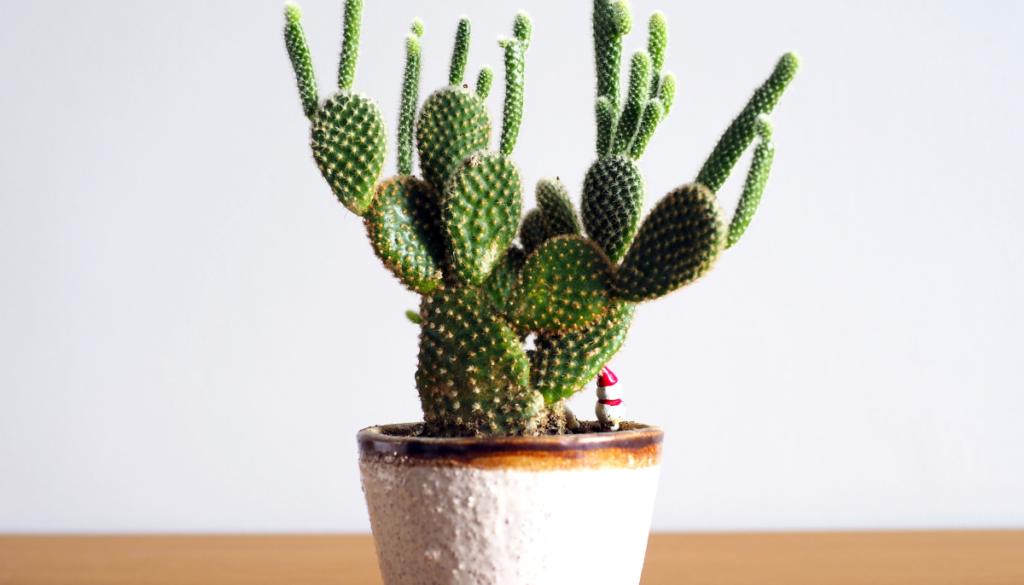
The scientific name of this succulent is opuntia microdasys, but bunny ear is the much better (okay, in my opinion) and perfect common name for this adorable plant. It’s also called the Polka Dot cactus or Angel Wings, and it’s ideal for beginners.
Soil: Sandy soil or a succulent-specific mix will work best for this cactus. You can also try regular all-purpose potting mix combined with perlite and peat moss.
Light: Direct, full sunlight is the way to keep your bunny ear happy. A minimum of six hours of sunlight a day is needed, but ideally, your bunny ear should receive around 10.
Water: Like many other succulents, the bunny ear doesn’t need water until its soil is completely dried out.
This guide from MasterClass has tips about propagating your bunny ear cactus. Share this cute succulent with your friends!
Aloe Vera
You probably already knew aloe vera treats sunburns, but did you know that it’s one of the most low-maintenance plants? This cute little succulent is hearty and easy to care for, making it a great option for beginners.
Soil: Again, a succulent-specific soil will keep your aloe vera happiest. Make sure that there’s adequate drainage to prevent root rot.
Light: Plenty of indirect sunlight is the key to keeping your succulent healthy.
Water: Your aloe vera doesn’t need very much water, only when the soil is dry. In the winter months, when the succulent isn’t getting very much sun, you should water it even less.
Take a look at these tips from rePotme for more information about growing a healthy aloe vera.
Hens and Chicks
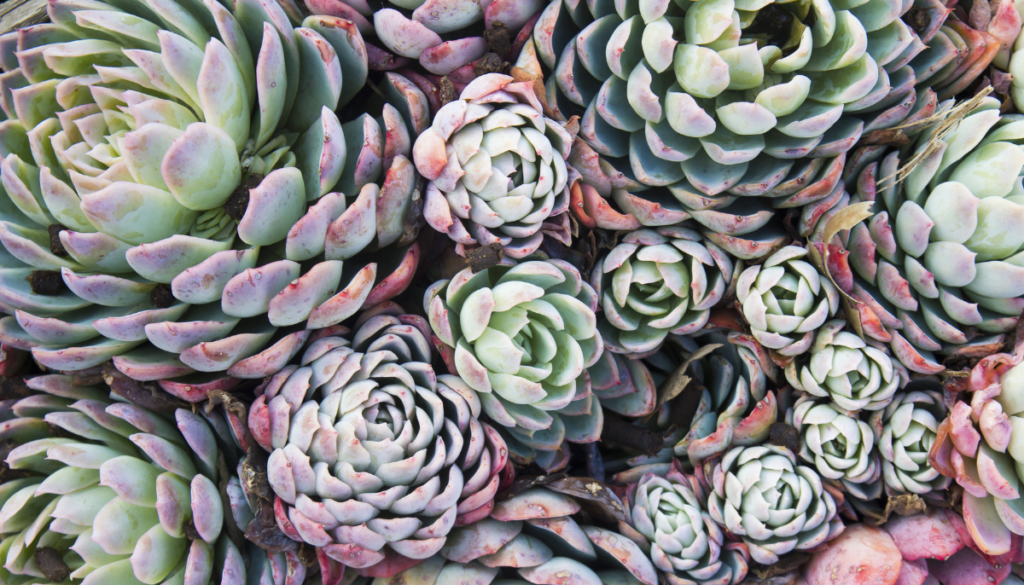
Hens and chicks do best outside, so if you have a garden, think about planting this succulent. But you can grow them inside, too, if you set them up right!
Hens and chicks have a rose pattern and look somewhat like an artichoke. The name is all about its looks: “The hens and chicks plant’s name comes from the fact that it propagates by producing offsets (chicks) that surround the mother plant (hen).”
Hens and chicks come in different shades of green, red, blue, purple, and copper. They’re a sturdy plant that can handle a lot of neglect.
Soil: As mentioned, hens and chicks do best outside. Rocky, sandy soil is ideal. If you choose to grow them inside, use clay pots and succulent-specific soil.
Light: Full sun is needed to keep your hens and chicks happy. If you’re growing yours in a clay pot indoors, make sure you place it in the sunniest spot in the house.
Water: You’ll rarely need to water your hens and chicks. If you live in an area with high temperatures, you should water once a week during the summer as long as the soil has completely dried out. For most of the year, you can go weeks and weeks without watering them.
Air Plants
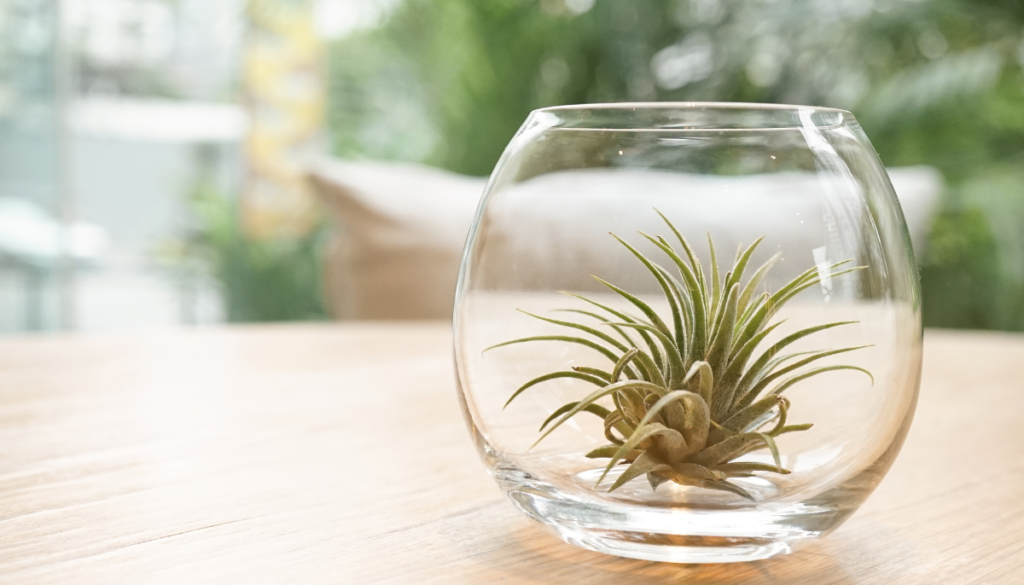
These tiny plants have become super popular, and for good reason! While they’re not necessarily colorful, they make a room more vibrant – and they’re extremely easy to care for!
What exactly are air plants? They’re mini ecosystems that usually grow on a host plant, but they can grow on their own, too. According to the National Park Service, “Airplants don’t require any soil to grow; they get enough moisture and nutrients from the air and rain to support themselves.”
Water: Obviously, if you’re keeping them indoors, they won’t get that rain. But you won’t have to remember to water them very often. According to The Spruce, “Most air plants can be successfully watered using a soaking method, where the plant is left to soak in a bowl of distilled water for 20 to 40 minutes every 1 to 2 weeks.
“However, some air plants prefer regular misting, or a quick dunk versus a longer soak. Researching the specific type of air plant that you have will help to determine which watering method is best.”
Light: Air plants are used to being shaded (they usually grow on a host, after all). Bright to medium indirect light is the best way to care for your air plants.
Which succulent would be the best addition to your home?
Read More: 14 Plants To Improve Indoor Air Quality

